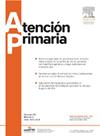秘鲁农村初级保健中的精神健康和远程医疗:性别对耻辱和接受的影响和差异
IF 1.8
4区 医学
Q2 MEDICINE, GENERAL & INTERNAL
引用次数: 0
摘要
目的分析秘鲁农村初级保健社区对心理健康相关污名的认知和远程医疗接受程度的性别差异。设计横断面、相关性研究。秘鲁的两个农村社区:Villa Salvación (Manu, Madre de Dios)和Hierba Buena (Cajabamba, ca哈马卡)。参与者:通过分层概率抽样选出的339名18岁以上的个体(178名男性和161名女性)。主要测量结果变量包括对心理健康的认知(理解、评价)、耻辱感(害怕社会评判)、使用远程医疗的意愿和对隐私的担忧。解释变量包括性别、教育水平、居住时间和健康保险类型。采用logistic回归计算比例和校正优势比(OR), 95%置信区间。结果两性对心理健康的理解和评价与受教育程度呈正相关(P< 0.05)。然而,女性在寻求帮助时更担心社会耻辱感(47%的女性担心“别人可能会说什么”,男性为38%;调整OR = 1.5;95%CI: 1.0-2.4),而男性对远程医疗的有效性持怀疑态度(42%表示怀疑,女性为30%;调整OR = 1.6;95%置信区间:1.0—-2.5)。在使用远程医疗的总体意愿或隐私问题上,没有观察到显著的性别差异。结论农村远程医疗的病耻感认知和评价存在性别差异。虽然女性因耻辱而面临更大的社会压力,但男性更有可能质疑虚拟护理的有效性。这些发现突出表明,需要采取考虑性别动态的初级保健干预措施,以提高农村社区对远程医疗的接受程度和有效性。本文章由计算机程序翻译,如有差异,请以英文原文为准。
Salud mental y telemedicina en la atención primaria rural del Perú: influencia y diferencias de género en el estigma y la aceptación
Objective
To analyze gender differences in the perception of mental health–related stigma and the acceptance of telemedicine in rural Peruvian communities served at the primary care level.
Design
Cross-sectional, correlational study.
Setting
Two rural communities in Peru: Villa Salvación (Manu, Madre de Dios) and Hierba Buena (Cajabamba, Cajamarca).
Participants
A total of 339 individuals over 18 years old, selected through stratified probabilistic sampling (178 men and 161 women).
Main Measurements
Outcome variables included perceptions of mental health (understanding, valuation), stigma (fear of social judgment), willingness to use telemedicine, and privacy concerns. Explanatory variables were sex, educational level, length of residence, and type of health insurance. Proportions and adjusted odds ratios (OR) with 95% confidence intervals were calculated using logistic regression.
Results
Greater understanding and valuation of mental health were positively associated with educational level in both genders (P<.05). However, women showed greater concern about social stigma when seeking help (47% feared «what others might say» vs. 38% in men; adjusted OR = 1.5; 95%CI: 1.0-2.4), while men were more skeptical about telemedicine's effectiveness (42% expressed doubts vs. 30% in women; adjusted OR = 1.6; 95%CI: 1.0-2.5). No significant gender differences were observed in overall willingness to use telemedicine or in privacy concerns.
Conclusions
There are gender-related differences in perceptions of stigma and the evaluation of telemedicine in rural settings. While women face greater social pressure due to stigma, men are more likely to question the effectiveness of virtual care. These findings highlight the need for primary care interventions that consider gender dynamics to enhance the acceptance and effectiveness of telemedicine for mental health in rural communities.
求助全文
通过发布文献求助,成功后即可免费获取论文全文。
去求助
来源期刊

Atencion Primaria
医学-医学:内科
CiteScore
2.90
自引率
8.00%
发文量
156
审稿时长
33 days
期刊介绍:
Atención Primaria es una revista que publica trabajos de investigación relativos al ámbito de la atención primaria de salud. Desde el punto de vista conceptual, Atención Primaria asume el nuevo modelo de atención primaria de salud, orientado no sólo a la curación de la enfermedad, sino también a su prevención y a la promoción de la salud, tanto en el plano individual como en el de la familia y la comunidad. En estos nuevos aspectos que definen el modelo de atención primaria de salud es en los que se centran los trabajos de investigación que publica Atención Primaria, la primera revista de originales española creada para recoger y difundir la producción científica realizada desde los centros de atención primaria de salud sobre cuestiones como protocolización de la asistencia, programas de prevención, seguimiento y control de pacientes crónicos, organización y gestión de la asistencia primaria, entre otros.
 求助内容:
求助内容: 应助结果提醒方式:
应助结果提醒方式:


